‘Tuple’ Object Is Not Callable
A tuple is a built-in object in Python that is commonly used to store a collection of items. It is an immutable sequence, which means that once a tuple is created, its elements cannot be modified. Tuples are especially useful when you want to group related items together, but you don’t want to allow any changes to those items.
In this article, we will explore the concept of tuples in Python and discuss various aspects related to them. We will cover topics such as the syntax of tuples, indexing and slicing, modifying and deleting elements, methods available for tuples, tuple packing and unpacking, and common errors associated with tuples.
What is a tuple?
A tuple is similar to a list, but it is immutable, meaning its elements cannot be modified once the tuple is created. Tuples are typically enclosed in parentheses (), although they can also be created without parentheses. Each element in a tuple is separated by a comma.
Syntax of a tuple
To define a tuple in Python, you can simply enclose the elements in parentheses, like this:
my_tuple = (1, 2, 3, 4, 5)
You can also create a tuple without using parentheses:
my_tuple = 1, 2, 3, 4, 5
Indexing and slicing a tuple
Just like lists, tuples can be accessed using indexing and slicing. Indexing starts at 0, so the first element of a tuple has an index of 0.
To access a specific element in a tuple, you can use square brackets [] and provide the index of the element you want to retrieve. For example:
my_tuple = (1, 2, 3, 4, 5)
print(my_tuple[2]) # Output: 3
You can also use negative indexing to access elements from the end of the tuple. For example:
my_tuple = (1, 2, 3, 4, 5)
print(my_tuple[-1]) # Output: 5
Slicing allows you to extract a portion of a tuple. It is done by specifying the start and end indices, separated by a colon. For example:
my_tuple = (1, 2, 3, 4, 5)
print(my_tuple[1:4]) # Output: (2, 3, 4)
Modifying and deleting elements of a tuple
As mentioned earlier, tuples are immutable, which means you cannot modify their elements once they are created. If you try to modify an element, you will encounter a TypeError.
However, you can create a new tuple by concatenating or repeating existing tuples. For example:
my_tuple1 = (1, 2, 3)
my_tuple2 = (4, 5, 6)
new_tuple = my_tuple1 + my_tuple2
print(new_tuple) # Output: (1, 2, 3, 4, 5, 6)
Similarly, you can repeat a tuple using the * operator:
my_tuple = (1, 2, 3)
repeated_tuple = my_tuple * 3
print(repeated_tuple) # Output: (1, 2, 3, 1, 2, 3, 1, 2, 3)
To delete a tuple, you can use the del keyword. This will completely remove the tuple from memory. For example:
my_tuple = (1, 2, 3)
del my_tuple
print(my_tuple) # Raises NameError: name ‘my_tuple’ is not defined
Methods available for tuples
Tuples in Python have a few built-in methods that you can use for various operations. Here are some commonly used methods:
– count(value): Returns the number of occurrences of the specified value in the tuple.
– index(value): Returns the index of the first occurrence of the specified value in the tuple.
For example:
my_tuple = (1, 2, 2, 3, 4)
print(my_tuple.count(2)) # Output: 2
print(my_tuple.index(3)) # Output: 3
Tuple packing and unpacking
Tuple packing is the process of packing multiple values into a single tuple, while tuple unpacking is the opposite – extracting values from a tuple into separate variables.
Tuple packing is done automatically when you assign multiple values to a single variable. For example:
my_tuple = 1, 2, 3
print(my_tuple) # Output: (1, 2, 3)
Tuple unpacking is achieved by assigning the values of a tuple to multiple variables in a single line. For example:
my_tuple = (1, 2, 3)
a, b, c = my_tuple
print(a) # Output: 1
print(b) # Output: 2
print(c) # Output: 3
Common errors with tuples
There are a few common errors that you might encounter when working with tuples. Let’s discuss them briefly:
1. TypeError: ‘tuple’ object is not callable pandas
This error typically occurs when you accidentally try to call a tuple as if it were a function or a method. To fix this error, make sure that you are using the correct syntax for function calls and method invocations.
2. TypeError: ‘list’ object is not callable
This error indicates that you are trying to use a list as if it were a function. To resolve this issue, check your code for any instances where you might be trying to call a list as a function.
3. AttributeError: ‘tuple’ object has no attribute ‘shape’
This error occurs when you try to access the ‘shape’ attribute of a tuple. Tuples in Python do not have a ‘shape’ attribute like arrays or matrices in some other programming languages.
4. Transform list to tuple python
To transform a list into a tuple in Python, you can use the built-in tuple() function. Simply pass the list as an argument to the function, and it will return a tuple containing the same elements.
5. Input tuple in Python
To take input for a tuple in Python, you can use the input() function to get user input as a string. Then, you can convert the string input into a tuple using the ast.literal_eval() function, which safely evaluates a string as a literal Python expression.
6. Convert string list to tuple Python
To convert a string representation of a list into a tuple, you can use the ast.literal_eval() function. This function safely evaluates the string as a literal Python expression, allowing you to convert the string list to a tuple.
7. TypeError: ‘tuple’ object is not callable matplotlib
This error can occur when you mistakenly try to call a tuple object in the matplotlib library as if it were a function. Double-check your code to ensure that you are using the correct syntax for calling functions or methods in matplotlib.
In conclusion, tuples are valuable objects in Python that are useful for storing and accessing collections of items. They are immutable, which means their elements cannot be modified after creation. By understanding the syntax, indexing, slicing, and various methods available for tuples, you can effectively use them in your Python programs. Be aware of common errors with tuples, such as calling them as functions when they are not callable, and utilize the appropriate techniques to avoid or resolve these errors.
Typeerror: ‘Tuple’ Object Is Not Callable | Django Error | Simple Errors |
Why Is My Tuple Not Callable?
When working with tuples in Python, it is essential to understand their purpose and limitations. Tuples are an immutable collection of ordered elements, and once created, their content cannot be changed. Unlike lists, which are mutable and can be modified after creation, tuples provide stability and reliability in certain programming scenarios. However, one common error that developers encounter when using tuples is the “tuple not callable” error message. In this article, we will explore the reasons behind this error and provide solutions to overcome it.
Understanding the Error Message:
Before delving into the reasons why a tuple may not be callable, it is crucial to comprehend what the error message actually means. When the “tuple not callable” error message is displayed, it is informing the developer that they are trying to use a tuple as if it were a function or a method, which is not possible. This error typically occurs when parentheses, commonly used to create tuples, are mistakenly placed after a tuple object and treated as function call syntax.
Reasons for the Error:
1. Parentheses Misuse:
One possible reason for this error is the misuse of parentheses. As tuples are defined using parentheses, it is easy to accidentally include parentheses after referencing a tuple object, assuming it will execute a function call. However, the interpreter recognizes this as an incorrect syntax and throws the “tuple not callable” error.
For example:
“`python
my_tuple = (1, 2, 3)
result = my_tuple() # Incorrect usage of parentheses
“`
In the above code snippet, a tuple object `my_tuple` is mistakenly called as a function by using parentheses after it. This will result in the “tuple not callable” error.
2. Confusion with Functions:
Another reason for encountering this error is due to confusion between tuples and functions. Functions and methods in Python use parentheses to denote a call, so it is easy to mistake tuples as being callable when they are not.
For instance:
“`python
def my_function():
return “Hello World”
my_tuple = (1, 2, 3)
result = my_tuple() # Incorrectly treating the tuple as a function
“`
In the code above, a function `my_function` is defined, and then a tuple object `my_tuple` is created. However, mistakenly calling the tuple object with parentheses results in the “tuple not callable” error.
3. Accidental Assignment:
Sometimes, this error may also occur when a function is mistakenly assigned to a tuple instead of calling the function itself. As tuples are immutable, they do not support being assigned a function or method, resulting in the “tuple not callable” error.
For example:
“`python
my_tuple = (1, 2, 3)
my_tuple = my_function # Incorrect assignment of a function to a tuple
result = my_tuple() # This will throw the “tuple not callable” error
“`
In the code snippet above, `my_function` is incorrectly assigned to the tuple `my_tuple`, leading to the error.
Solutions to the Error:
To resolve the “tuple not callable” error, we need to identify the specific cause and take the appropriate actions. Here are the recommended solutions for each cause of the error:
1. Parentheses Misuse:
To fix this issue, ensure that parentheses are only used while defining or creating tuples, not when accessing or referencing them. Removing the parentheses after the tuple name will resolve the error.
For instance:
“`python
my_tuple = (1, 2, 3)
result = my_tuple # Corrected usage without parentheses
“`
2. Confusion with Functions:
To resolve this error, it is crucial to understand the difference between tuples and functions. Verify that parentheses are used appropriately when calling functions and only use the function name to reference it.
For example:
“`python
def my_function():
return “Hello World”
my_tuple = (1, 2, 3)
result = my_function() # Corrected usage to call the function
“`
3. Accidental Assignment:
To eliminate this error, ensure that you are assigning functions or methods to variables or references, not to tuples. Remove the assignment of functions to tuples to fix the problem.
For instance:
“`python
my_tuple = (1, 2, 3)
my_reference = my_function # Corrected assignment to a reference
result = my_reference() # Now the function can be called correctly
“`
Frequently Asked Questions (FAQs):
Q: Can I modify a tuple after its creation?
A: No, tuples are immutable in Python, meaning their content cannot be changed once created.
Q: Can I add or remove elements from a tuple?
A: As tuples are immutable, it is not possible to add or remove elements directly. However, you can perform operations like concatenation or slicing to create new tuples with desired elements.
Q: Can a tuple contain elements of different types?
A: Yes, tuples can contain elements of different types, including integers, floating-point numbers, strings, and even other tuples.
Q: Are parentheses necessary when creating a tuple with a single element?
A: Yes, to distinguish a tuple from an ordinary value, parentheses are required even when creating a tuple with a single element. For example, `my_tuple = (1,)` creates a tuple with a single element.
Q: What are some common use cases for tuples in Python?
A: Tuples are often used to represent collections of related values that should not be modified, such as coordinates, database records, or multiple return values from a function.
In conclusion, the “tuple not callable” error occurs when tuples are mistakenly used as if they were functions or methods. By understanding the reasons behind this error and following the recommended solutions outlined in this article, you can avoid and resolve this issue effectively. Remember to use parentheses correctly while defining or creating tuples and to differentiate them from functions or methods.
What Does Tuple Object Is Not Callable Mean In Python?
Python is a popular programming language known for its simplicity and readability. However, even seasoned Python developers can come across error messages that may appear confusing at first. One such error message is “tuple object is not callable.” In this article, we will explore what this error means, why it occurs, and how to resolve it.
Understanding Tuples in Python:
Before diving into the details of the error message, let’s first understand what tuples are in Python. In Python, a tuple is an immutable sequence, similar to a list. However, unlike lists, tuples cannot be modified once created. They are defined using parentheses, and the elements within a tuple are separated by commas. Here’s an example:
my_tuple = (1, 2, 3)
In the above example, we have created a tuple named “my_tuple” that contains three elements: 1, 2, and 3.
Understanding the “Tuple Object is Not Callable” Error:
When Python throws an error message stating “tuple object is not callable,” it means that you are attempting to call a tuple object as if it were a function. In other words, you are using parentheses to invoke a tuple as if it were a function call. However, since tuples are not callable objects in Python, this throws an error.
For example, consider the following code snippet:
my_tuple = (1, 2, 3)
result = my_tuple()
In this code snippet, we are attempting to call the tuple “my_tuple” as if it were a function by using parentheses (). This will result in the error message “TypeError: ‘tuple’ object is not callable.”
Common Causes of the Error Message:
There are a few common causes that can lead to the “tuple object is not callable” error in Python. Let’s explore them:
1. Parentheses Misuse:
The most common cause of this error is mistakenly using parentheses to call a tuple. It is important to remember that tuples are not callable objects, so using parentheses as if you were invoking a function will throw this error.
2. Accidental Overwriting:
Another cause of this error could be accidentally overwriting a function name with a tuple. If you have assigned a tuple to a variable that was previously associated with a function, attempting to call that variable will throw this error.
3. Confusion with Methods:
In Python, some built-in functions or methods may return tuples. If you mistakenly call them as functions, instead of accessing their specific elements, the error message may occur. It is essential to understand the behavior of the functions and methods you are using to avoid this error.
How to Resolve the Error:
Now that you understand the possible causes of the “tuple object is not callable” error, let’s explore how to resolve it:
1. Check Parentheses Usage:
The first step is to review your code and ensure that you have not accidentally used parentheses to call a tuple. If you intended to call a function, confirm that the function name and its parentheses are correct. If you actually wanted to access the elements of a tuple, use indexing (e.g., my_tuple[0]).
2. Verify Variable Names:
If you have mistakenly overwritten a function name with a tuple, review your code and make sure your variable assignments are correct. Ensure that the variable names associated with functions are not used for tuples or other objects.
3. Understand Function Outputs:
To prevent this error when working with functions or methods that return tuples, it is crucial to understand their return values. Consult the documentation or function signature to determine whether the returned object is a tuple or a callable function. Modify your code accordingly to avoid any confusion.
Frequently Asked Questions (FAQs)
Q1. Can we convert a tuple into a callable function?
No, tuples cannot be converted into callable functions. Tuples are immutable sequences and do not have callable behavior. If you want a callable object, consider using functions or classes instead.
Q2. Are all functions in Python callable?
No, not all functions in Python are callable. While most functions can be called using parentheses and arguments, some functions are not meant to be called directly. For example, functions that are used as decorators or are bound to class instances can have different call behaviors.
Q3. Are there any alternative data types which can be called in Python?
Yes, there are several alternative data types in Python that can be called using parentheses. These include functions, methods, and classes. Additionally, certain objects can be made callable by defining a special method called “__call__” within the class definition.
Q4. What other common errors occur in Python?
Python is a versatile language, and developers may encounter various other errors. Some commonly encountered errors include “SyntaxError” (due to incorrect syntax), “NameError” (when a variable or name is not defined), and “TypeError” (when an operation is performed on incompatible data types).
Conclusion:
The “tuple object is not callable” error can be confusing for Python developers, especially for those new to the language. Understanding the concepts of tuples and callable objects is crucial to resolving this error. By carefully reviewing your code and ensuring correct usage of parentheses, you can avoid this error and make your Python code more efficient and error-free.
Keywords searched by users: ‘tuple’ object is not callable TypeError tuple object is not callable pandas, List’ object is not callable, Tuple shape, Transform list to tuple python, List to tuple Python, Input tuple in Python, Convert string list to tuple Python, Tuple object is not callable matplotlib
Categories: Top 88 ‘Tuple’ Object Is Not Callable
See more here: nhanvietluanvan.com
Typeerror Tuple Object Is Not Callable Pandas
When working with pandas, a powerful and widely used data manipulation library for Python, you may encounter the TypeError: ‘tuple’ object is not callable error. This error typically occurs when you try to call a tuple object as a function, which is not allowed in pandas.
In this article, we will delve into the reasons behind this error, explore common scenarios where it occurs, and provide insights on how to troubleshoot and resolve it. Additionally, we will address some frequently asked questions related to this issue.
Understanding the TypeError: ‘tuple’ object is not callable error
TypeError is a generic Python exception that occurs when an operation or function is applied to an object of an inappropriate type. In this specific case, the TypeError is raised when you attempt to invoke a tuple as a function in pandas.
Pandas, being a comprehensive data manipulation library, provides numerous functions and methods to manipulate data frames and series. However, some functions expect specific objects as arguments. When you mistakenly pass a tuple object in a location where a different data type is expected, you encounter the TypeError: ‘tuple’ object is not callable.
Common Scenarios
Let’s explore some common scenarios where this error might occur:
1. Incorrect column indexing:
One common scenario involves trying to access a column in a pandas DataFrame using parentheses instead of square brackets. For example, let’s consider a DataFrame named “df” with columns “name” and “age”. Accessing the “name” column using parentheses, i.e., `df(‘name’)`, instead of square brackets `df[‘name’]`, will raise the TypeError.
2. Incorrect function call:
Another typical scenario is mistakenly calling a tuple object as a function. For instance, if you have a tuple named “data” and mistakenly invoke it as a function, i.e., `data()`, the TypeError will be raised.
Troubleshooting and Resolving the TypeError
Now that we understand the common scenarios leading to the TypeError: ‘tuple’ object is not callable error, let’s explore some troubleshooting steps to resolve it:
1. Check for correct syntax:
Double-check your code for any syntax errors or typos. Ensure that you are using square brackets to access DataFrame columns and parentheses only when required for function calls.
2. Verify the correct object type:
Confirm that the object you are trying to invoke or access is indeed a function, method, or an appropriate type expected by the function. If not, review the pandas documentation to identify the correct method or object.
3. Rename variables:
It’s possible that you mistakenly assigned a tuple to a variable that you intended to be a function or a method. In that case, rename the variable to prevent any confusion and ensure its compatibility with the expected data type.
4. Use the appropriate pandas methods:
When manipulating pandas data frames or series, refer to the appropriate pandas methods for the desired operation. For instance, to select specific columns, use the `df.loc[:, [‘column_names’]]` syntax instead of trying to access them using function-like parentheses.
5. Examine the traceback:
Carefully examine the traceback provided with the error message, as it can help pinpoint the exact location where the TypeError occurs. Analyzing the traceback will aid in identifying the incorrect function call or incorrect object type.
FAQs
Q1. Why do I get a TypeError when accessing columns in pandas with parentheses?
A1. In pandas, square brackets are used to access columns in data frames, while parentheses are used for function calls. Using parentheses instead of square brackets results in the TypeError as it tries to call a tuple object as a function.
Q2. How can I access multiple columns in pandas without getting the TypeError?
A2. To access multiple columns, pass a list of the column names within the square brackets, like this: `df[[‘column1’, ‘column2’]]`.
Q3. What if I mistakenly assigned a tuple to a variable instead of a function?
A3. If you mistakenly assigned a tuple to a variable that you intended to be a function, simply rename the variable to avoid any confusion.
Q4. Are there any alternative data types to tuples that are callable in pandas?
A4. Yes, you can use functions or methods that can be called in pandas. It is crucial to refer to the pandas documentation to understand the expected data types and appropriate usage.
Q5. How can I troubleshoot the TypeError effectively?
A5. Analyze the traceback provided with the TypeError to identify the location of the error. Review the code for syntax errors, ensure correct object types, and refer to the pandas documentation for appropriate methods and operations.
In conclusion, the TypeError: ‘tuple’ object is not callable in pandas occurs when attempting to use a tuple object as a function. By understanding the common scenarios leading to this error and following the troubleshooting steps outlined in this article, you will be able to effectively resolve it and continue working with pandas efficiently.
List’ Object Is Not Callable
When working with Python, you may come across the error message “List’ object is not callable.” This cryptic error message can be confusing, especially for beginners. In this article, we will explore the possible causes of this error and guide you on how to resolve it. By the end, you will have a clear understanding of why this error occurs and how to fix it.
Understanding the Error:
To comprehend this error, it is important to understand the concept of callable objects in Python. A callable object is one that can be called like a function, using parentheses to pass arguments and execute its code. These objects can be functions, methods, or classes. Lists, on the other hand, are not callable objects. They are a fundamental data type in Python used to store collections of items, but they cannot be executed like a function.
Possible Causes of the Error:
1. Accidentally calling a list: The most common cause of this error is unintentionally calling a list as if it were a function. This happens when you mistakenly add parentheses after a list name, assuming it to be callable.
2. Variable name conflict: Another possible reason for this error is a conflict between a variable name and an existing function or method name. If you assign a list to a variable name that coincides with a callable object, Python may encounter ambiguity, leading to this error.
3. Using incorrect syntax: Sometimes, incorrect syntax can also trigger this error. For instance, if you mistakenly use parentheses after a list name in an inappropriate manner, you might encounter this error.
Now, let’s explore how to fix this error:
Resolving the Error:
1. Check variable names: If you encounter this error, the first step is to carefully examine your code for any variable name conflicts. Ensure that you are not using the same name for both a list and a callable object. By renaming conflicting variables, you can eliminate any ambiguity.
2. Understand syntax: If you have grasped the syntax of Python, you may realize that calling a list using parentheses is invalid. Lists are accessed using square brackets, not parentheses. Thus, double-check your code to make sure you are using the proper syntax when working with lists.
Frequently Asked Questions (FAQs):
Q1. Why do we get the error message “List’ object is not callable”?
A1. This error occurs when you mistakenly try to call a list as if it were a function, or if there is a conflict between a list and a callable object due to variable naming.
Q2. Can lists be callable objects in Python?
A2. No, lists cannot be called like functions. They are a data type used to store collections of items and do not have executable code associated with them.
Q3. How can I avoid this error in my code?
A3. To avoid this error, ensure that you do not call a list as if it were a function, double-check your variable names to avoid conflicts, and use correct syntax when working with lists.
Q4. Are there any other similar errors in Python?
A4. Yes, similar errors include “TypeError: ‘int’ object is not callable” or “TypeError: ‘str’ object is not callable,” which occur when attempting to call an integer or string as if they were functions.
Q5. Can I convert a list into a callable object?
A5. While you cannot directly convert a list into a callable object, you can create a callable object that utilizes a list as an attribute or parameter.
In conclusion, the “List’ object is not callable” error occurs when you mistakenly try to call a list as if it were a function or encounter a conflict between a list and a callable object. It can be resolved by carefully examining your code for variable name conflicts, ensuring correct syntax, and understanding the distinction between lists and callable objects. By following the guidelines mentioned in this article, you will be able to identify the cause of the error and resolve it effectively.
Tuple Shape
The shape of a tuple is determined by the number of elements it contains and their respective order. Each element within a tuple is referred to as a member and can be accessed using a specific index. Tuples can hold any number of elements, including zero. For example, a tuple with three elements is said to have a shape of three, while an empty tuple has a shape of zero.
The order of elements within a tuple is fixed, meaning that you cannot change the position of individual elements once a tuple is created. This immutability makes tuples distinct from other data types like arrays or lists, which allow for dynamic modifications. The consistency of tuple shape is beneficial in scenarios where a specific sequence or arrangement of elements needs to be maintained.
Tuple shape is particularly useful when working with data structures or algorithms that rely on consistent input formats. For instance, imagine a scenario where you need to store the coordinates of different points in a two-dimensional space. You can define a tuple shape of two, with the first element representing the x-coordinate and the second element representing the y-coordinate. By enforcing this shape, you ensure that every tuple containing coordinates adheres to a consistent format, making it easier to process and analyze the data.
Another compelling aspect of tuple shape is its ability to represent and manipulate complex data structures. By nesting tuples within each other, you can build multidimensional structures. For example, a tuple with a shape of (2, 3) would have two outer elements, each containing three inner elements. This concept is reminiscent of a matrix, where rows and columns are represented by the outer and inner elements, respectively. With tuple shape, you can elegantly model diverse data structures without resorting to complex classes or objects.
Now let’s address some commonly asked questions related to tuple shape:
Q: Can I change the shape of a tuple after it is created?
A: No, tuples are immutable, meaning that their shape and contents cannot be modified once defined. If you need to alter a tuple’s shape or modify its elements, you would need to create a new tuple with the desired structure.
Q: What happens if I try to access a tuple element that does not exist within its shape?
A: If you attempt to access an element using an index outside the valid range defined by the tuple’s shape, a runtime error will occur. It is crucial to ensure that you access tuple elements within the permissible index range to avoid such errors.
Q: Can tuples have different shapes within the same program?
A: Yes, tuples with varying shapes can coexist in a program. Each tuple’s shape is independent of others, enabling you to use tuples with different structures to suit different requirements within your code.
Q: What is the advantage of using tuples instead of other data types?
A: Tuples offer several advantages, including immutability, consistent shape, and the ability to hold elements of different types. They are lightweight data structures that require minimal memory overhead and can be easily manipulated and passed between functions.
In conclusion, tuple shape plays a crucial role in organizing and manipulating data within tuples. Determined by the number and order of elements, tuple shape ensures consistency and enables the representation of complex data structures. By understanding and effectively utilizing tuple shape, programmers can harness the power and versatility of tuples to build efficient algorithms and data structures.
Images related to the topic ‘tuple’ object is not callable
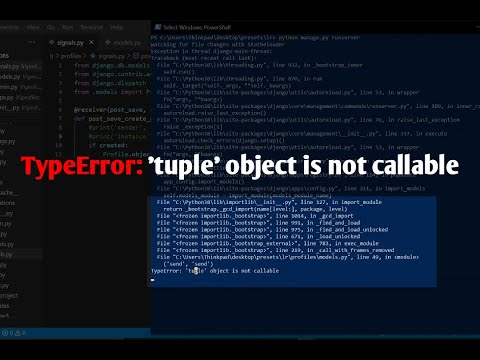
Found 37 images related to ‘tuple’ object is not callable theme
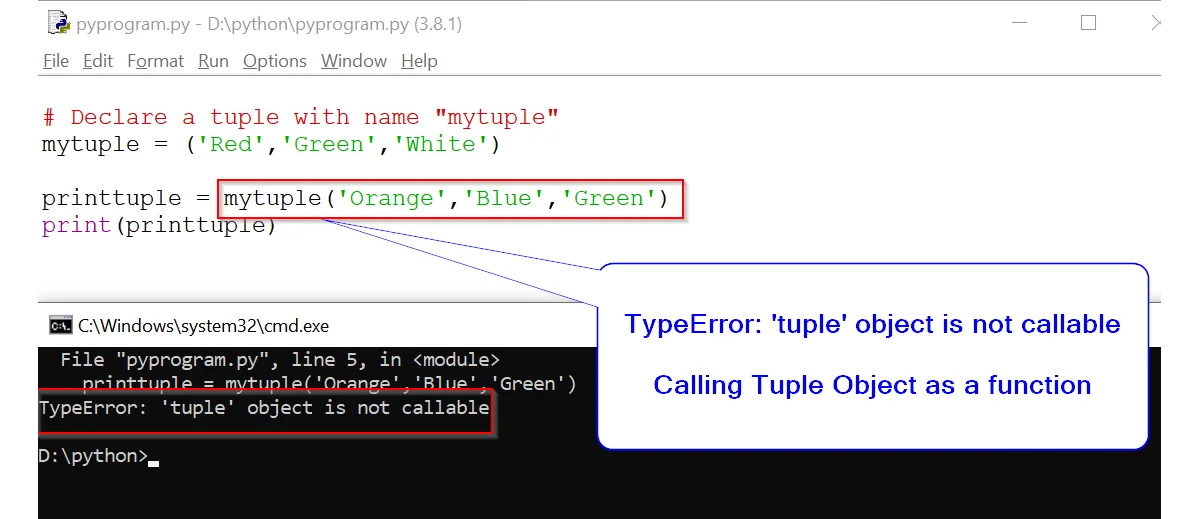



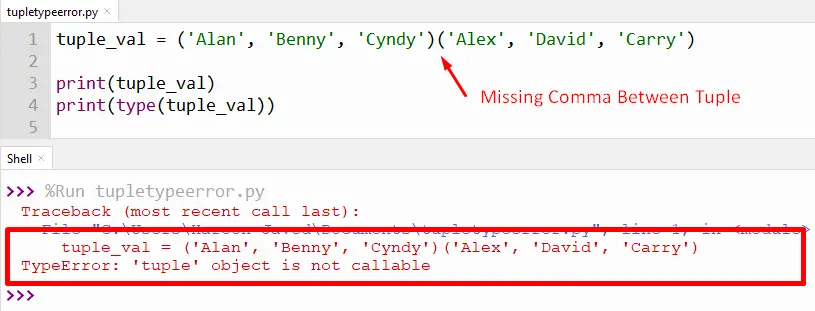

![TypeError: 'tuple' object is not callable in Python [Fixed] | bobbyhadz Typeerror: 'Tuple' Object Is Not Callable In Python [Fixed] | Bobbyhadz](https://bobbyhadz.com/images/blog/python-typeerror-tuple-object-is-not-callable/banner.webp)
![TypeError: 'tuple' object is not callable in Python [Fixed] | bobbyhadz Typeerror: 'Tuple' Object Is Not Callable In Python [Fixed] | Bobbyhadz](https://bobbyhadz.com/images/blog/python-typeerror-tuple-object-is-not-callable/typeerror-tuple-object-is-not-callable.webp)
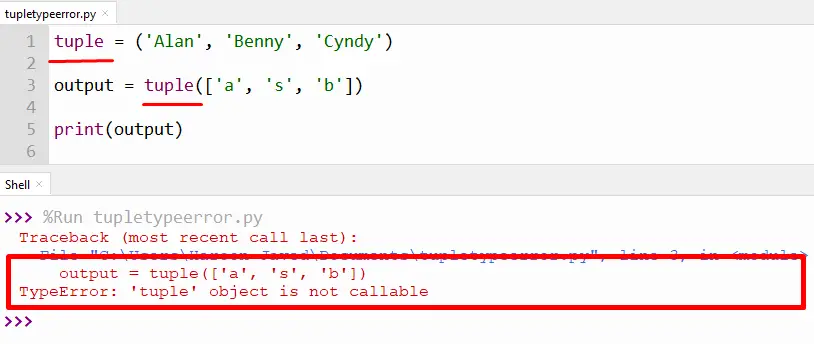



![Typeerror: 'tuple' object is not callable [SOLVED] Typeerror: 'Tuple' Object Is Not Callable [Solved]](https://itsourcecode.com/wp-content/uploads/2023/04/Typeerror-tuple-object-is-not-callable.png)

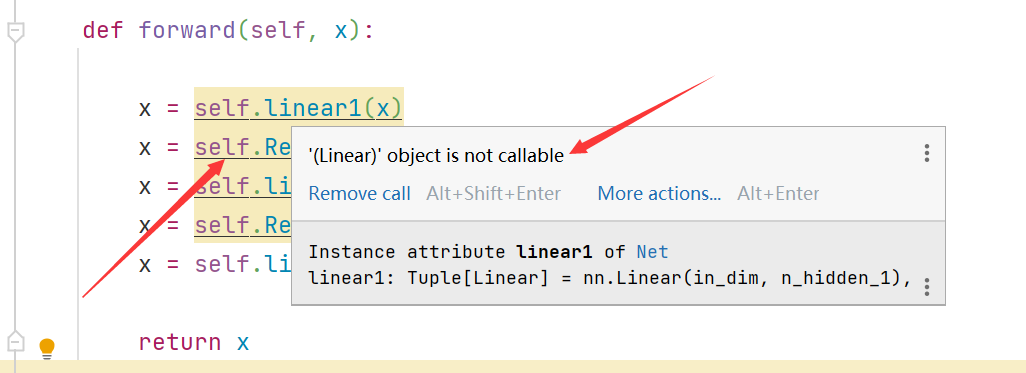

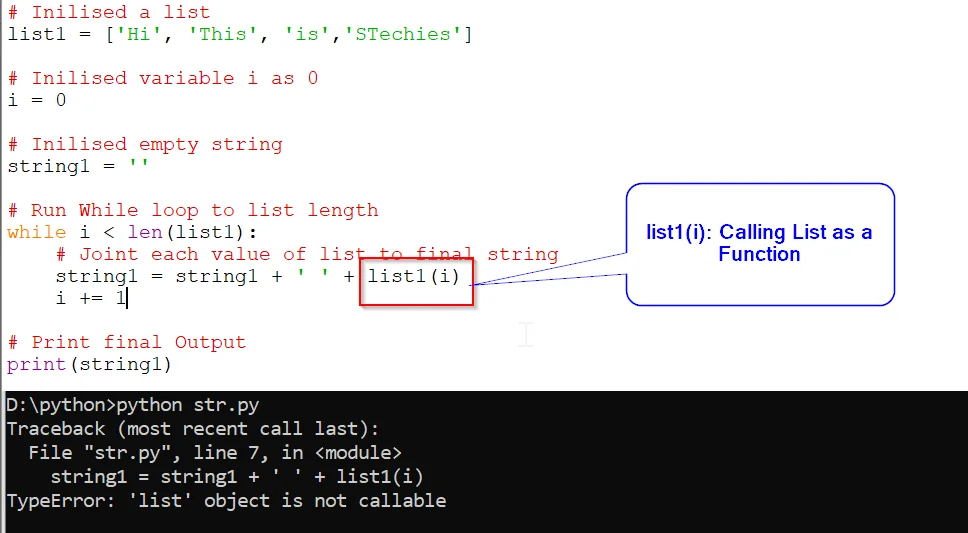


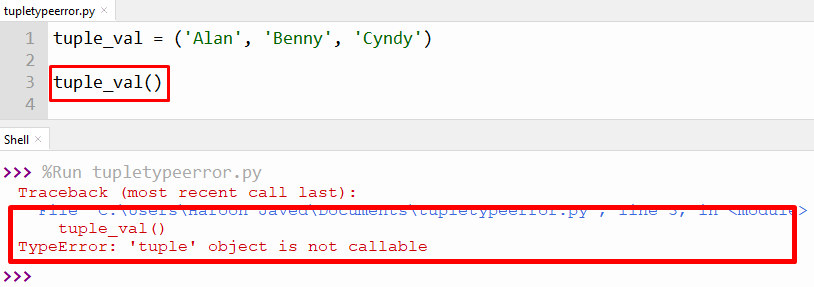
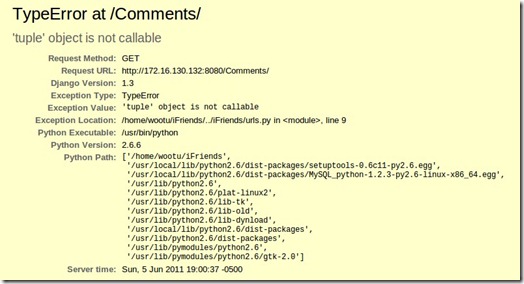
![Solved] TypeError: 'NoneType' Object is Not Subscriptable - Python Pool Solved] Typeerror: 'Nonetype' Object Is Not Subscriptable - Python Pool](https://www.pythonpool.com/wp-content/uploads/2022/04/TypeError-str-object-is-not-callable-1.webp)









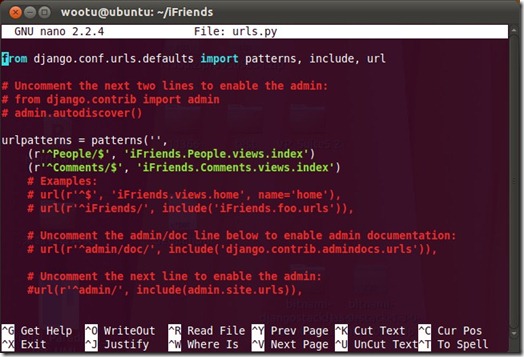
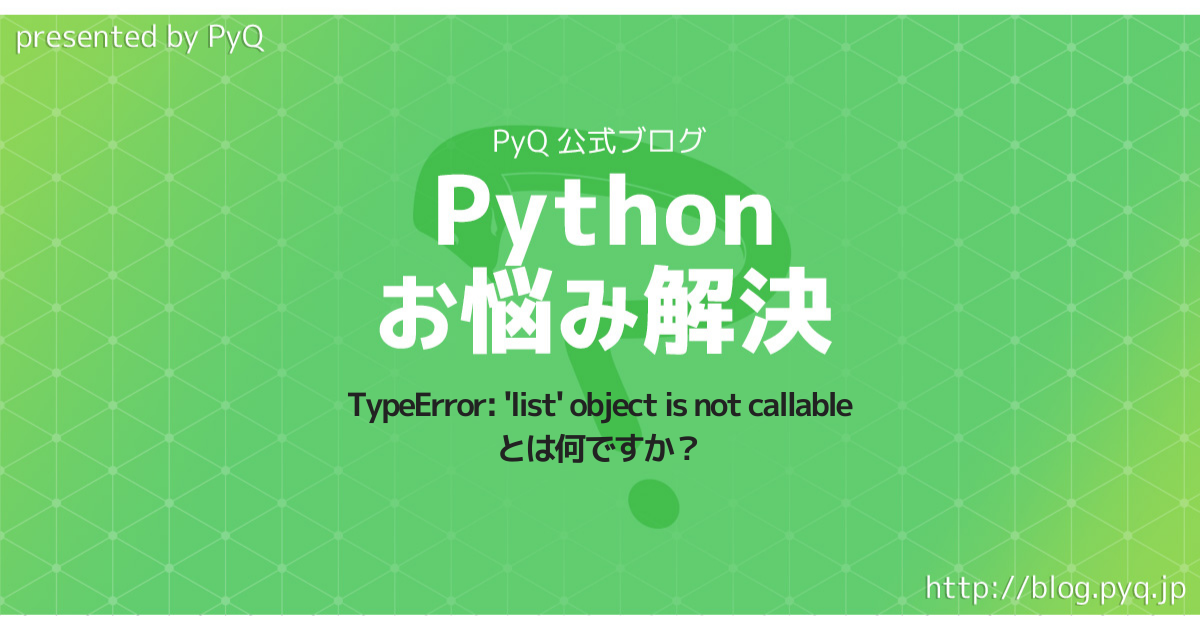




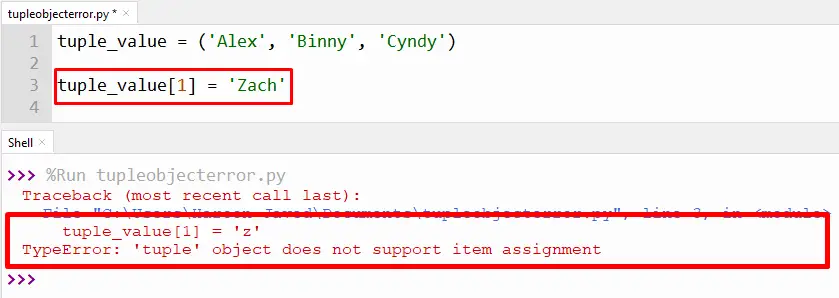
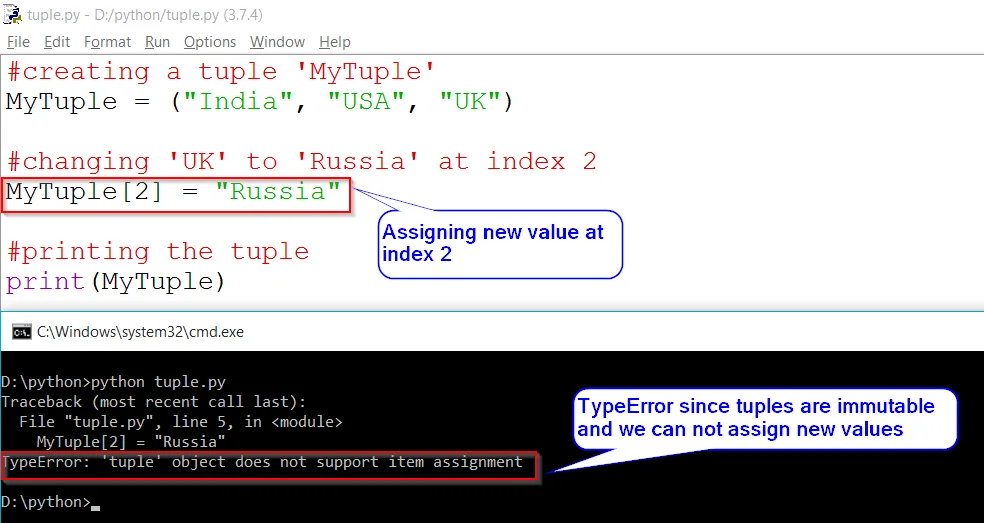




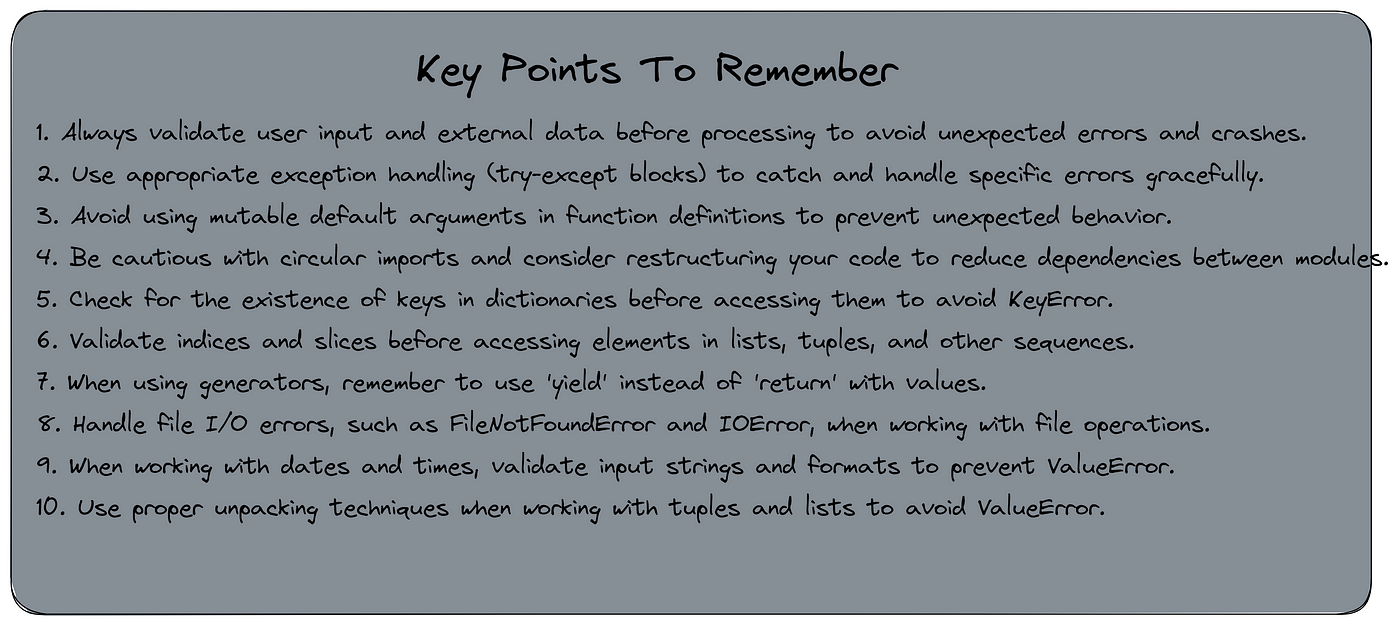
Article link: ‘tuple’ object is not callable.
Learn more about the topic ‘tuple’ object is not callable.
- TypeError: ‘tuple’ object is not callable in Python [Fixed]
- Python TypeError: ‘tuple’ object is not callable Solution
- TypeError: ‘tuple’ object is not callable in Python (Fixed)
- Python TypeError: ‘tuple’ object is not callable Solution
- How to Create and Use Tuples in Python – MakeUseOf
- TypeError: ‘tuple’ object is not callable in Python (Fixed)
- ‘tuple’ object is not callable: Causes and solutions in Python
- 2 Causes of TypeError: ‘Tuple’ Object is not Callable in Python
- How to fix TypeError: ‘tuple’ object is not callable in Python
- TypeError ‘tuple’ object is not callable – STechies
- django: TypeError: ‘tuple’ object is not callable – Stack Overflow
- TypeError: ‘tuple’ object is not callable in Python – Its Linux FOSS
- Typeerror: ‘tuple’ object is not callable – Itsourcecode.com
See more: nhanvietluanvan.com/luat-hoc